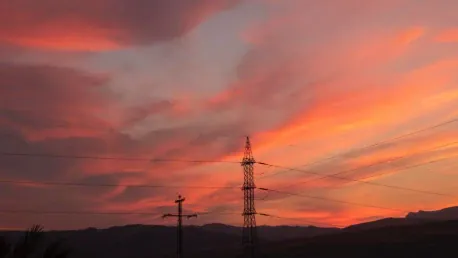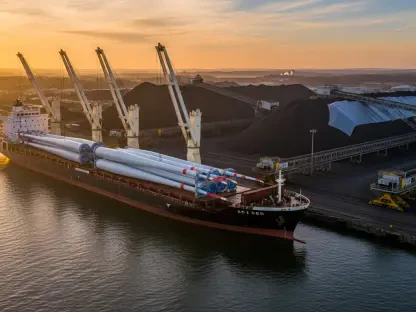Incoming President-elect Donald Trump intends to declare a “national energy emergency” as part of his ambitious plan to boost U.S. energy production, including opening up drilling in Alaska. The incoming White House officials indicated that Trump is set to shift U.S. energy policy significantly from renewable resources to a greater emphasis on domestic resource extraction. This emergency declaration would grant him access to various powers necessary to ramp up natural resource production, encompassing drilling in the Arctic Ocean—a move that outgoing President Joe Biden had firmly opposed. Trump’s executive order is aimed at lowering energy costs and bolstering national security, particularly in the development of advanced artificial intelligence, which requires enormous amounts of electricity for its operations.
Shifting Energy Policies and Their Implications
Despite the United States maintaining high energy production levels and even being a net exporter, Trump argues that additional production will help lower costs across the economy by reducing fuel prices for shipping and electricity for manufacturing goods. However, there is skepticism about whether increasing U.S. oil production would significantly reduce global oil prices. Other oil-producing nations might strategically cut their production to maintain prices, diminishing the potential impact of increased U.S. output on global markets. This intricate balance in oil production and pricing could limit Trump’s ambitions to bring down energy costs. Nonetheless, the potential economic benefits in the domestic arena could be substantial, ensuring cheaper energy for various industries and consumers.
Biden’s administration, prioritizing environmental protection and renewable energy, had taken measures to restrict offshore drilling along critical coastlines—East Coast, Gulf of Mexico, and Pacific Northwest. These efforts aimed at mitigating environmental and economic risks associated with extensive drilling activities may face reversal under Trump’s forthcoming policies. However, potential legal challenges from environmental groups, reminiscent of those during Trump’s first term, could pose significant hurdles. The legal battles would likely center around the environmental impacts and adherence to federal regulations protecting marine and coastal ecosystems.
Economic and Technological Ramifications
In addition to the environmental and legal challenges, advancements in technology threaten to reshape the oil industry workforce. A report by EY forecasted that advanced robotics and artificial intelligence could reduce the workforce in the oil industry by up to 30% over the next two decades. As automation becomes more prevalent, concerns about job losses and the displacement of workers in the energy sector grow. While these technologies promise efficiency and cost savings, they also carry the risk of significant socio-economic disruption. Balancing technological innovation with workforce stability will be a critical challenge for policymakers and industry leaders.
On the other hand, the development and deployment of advanced artificial intelligence necessitate substantial electricity consumption. Trump’s focus on boosting traditional energy sources to support these advancements is evident, but this approach stands in stark contrast to climate-conscious strategies. The debate intensifies over whether the focus should be on immediate energy cost reduction through increased fossil fuel extraction or a long-term transition to renewable energy sources. Comparing the contrasting energy strategies of the Trump and Biden administrations highlights their different visions for America’s energy future.
Concluding Thoughts
The oil industry is facing challenges from technological advancements along with environmental and legal issues. According to a report by EY, advanced robotics and artificial intelligence could cut the workforce in the oil sector by up to 30% over the next twenty years. As automation spreads, worries about job losses and worker displacement in the energy sector increase. Although these technologies offer efficiency and cost savings, they also pose a risk of major socio-economic disruption. Policymakers and industry leaders must navigate the balancing act between technological innovation and maintaining workforce stability.
Meanwhile, the development and use of advanced AI require significant electricity consumption. Trump’s focus on enhancing traditional energy sources to support these advancements is clear, which contrasts sharply with climate-conscious approaches. The debate over whether to focus on immediate energy cost reduction through increased fossil fuel extraction or a long-term shift to renewable energy is growing. Comparing the energy strategies of the Trump and Biden administrations reveals their distinct visions for America’s energy future.









